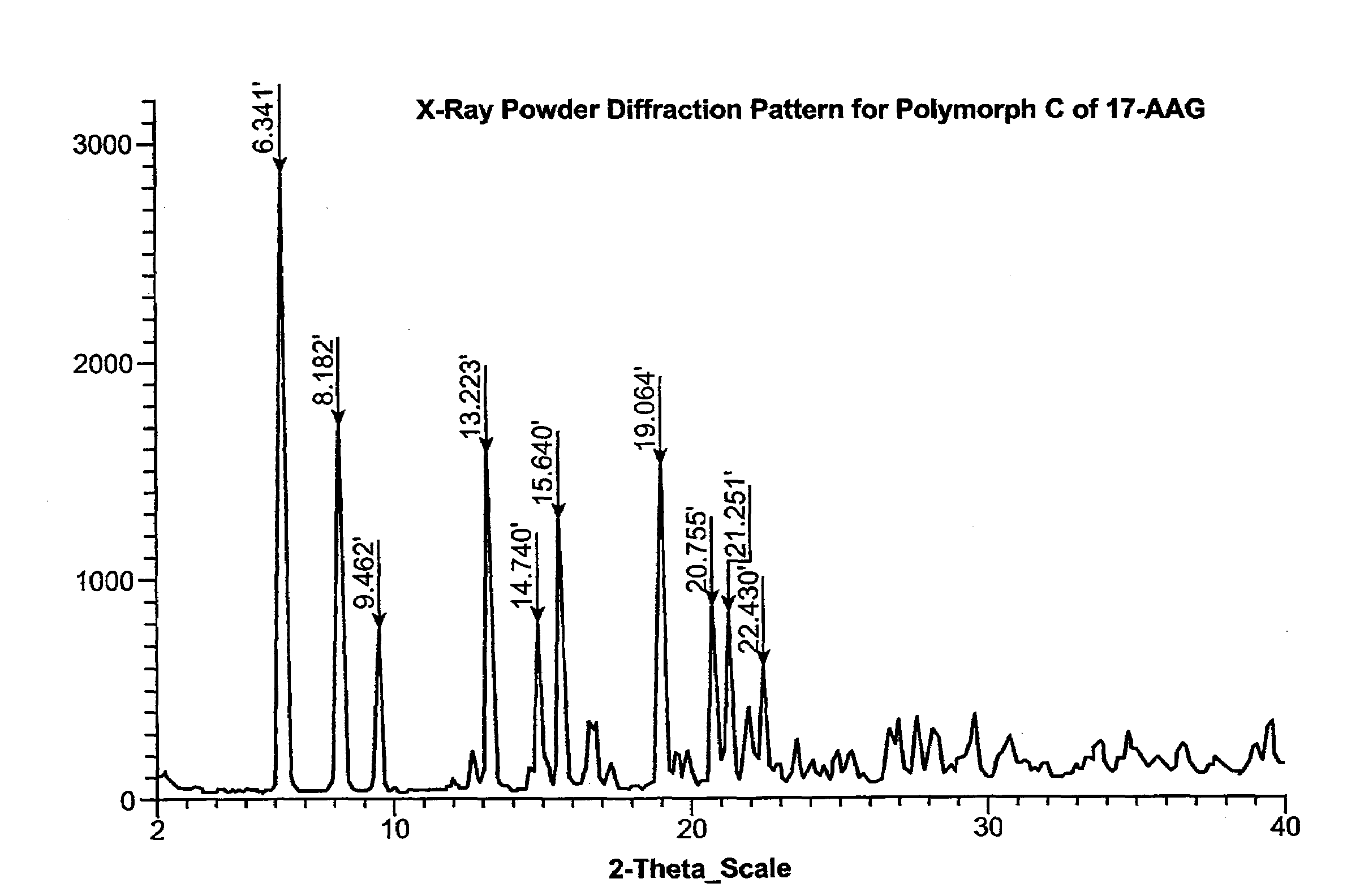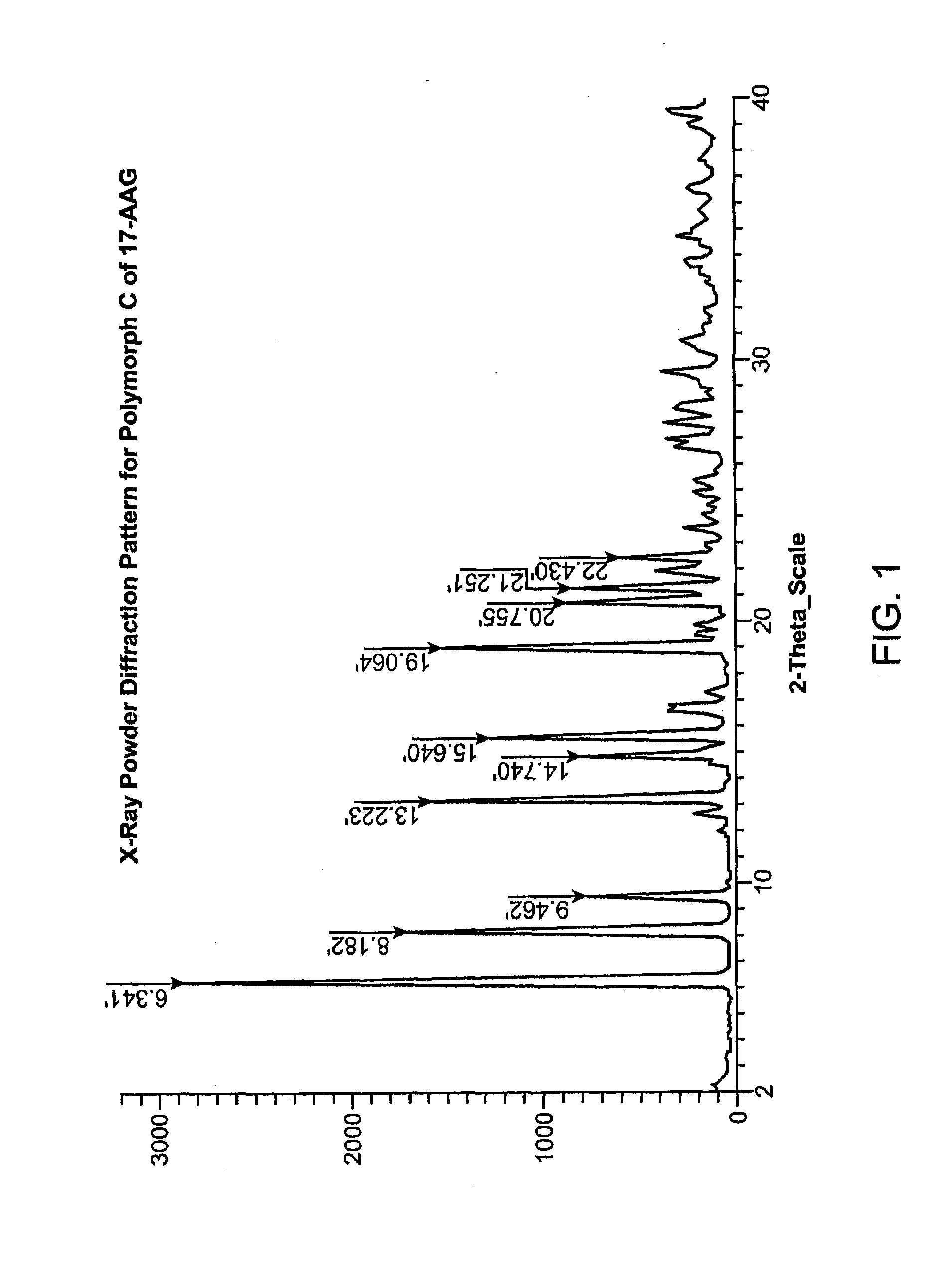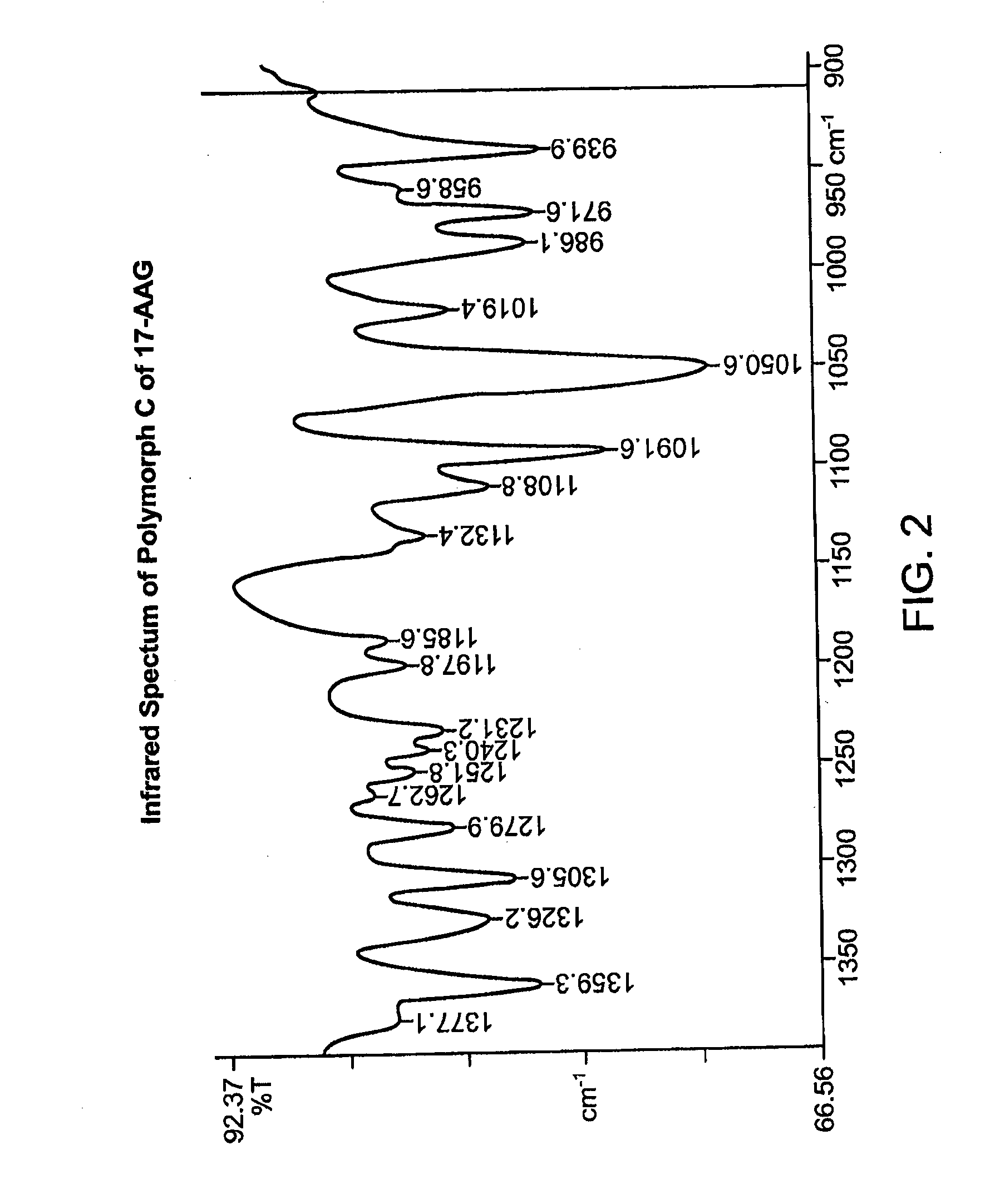17-allylamino-17-demethoxygeldanamycin polymorphs and formulations
- Summary
- Abstract
- Description
- Claims
- Application Information
AI Technical Summary
Benefits of technology
Problems solved by technology
Method used
Image
Examples
example 1
Preparation of Purified 17-AAG
[0286]This process produces highly pure 17-AAG by removing polar impurities using a slow crystallization from acetone-water at about ambient temperature. A flask containing crude 17-AAG (21 g) was set up for reflux. Acetone (20 mL per gram of solids) was added to the flask. The slurry was brought to reflux and held at that temperature for 5 min. The mixture was cooled to 25° C. over 1 h. Water (in a volume equal to the volume of acetone) was added over a 1 h period. After 20 min, the slurry was filtered. The filter cake was washed with 1:1 acetone:water (40 mL). The wet cake (28 g) was filtered and kept for further processing. The 17-AAG so produced had a chromatographic purity of 99.7% and was Polymorph B.
example 2
Preparation of Purified Polymorph A
[0287]This procedure produces purified 17-AAG comprising Polymorph A (i.e., less than 5% of chemical impurities, usually less than 3% of chemical impurities or components that are not 17-AAG). The conditions outlined below provide for the formation of Polymorph A in a range of isostructural formations, i.e., the crystal structure of the material is the same and different solvent molecules are able to occupy the same sites in the crystal lattice.
[0288]17-AAG is dissolved in solvent (5-10 vols), cooled to about −4 C to about −24 C, filtered, and recooled to about −4 C to about −24° C. The solution is allowed to evaporate wherein solids precipitate. The solids are collected by filtration and vacuum-dried at room temperature to provide Polymorph A. Solvents used in this preparation include dimethyl sulfoxide, N,N-dimethylformamide, tetrahydrofuran, nitromethane, methyl acetate, ethyl acetate, butyl acetate, and methyl isobutyl ketone.
example 3
Preparation of Purified Polymorph C
[0289]This procedure produces 17-AAG predominantly comprising Polymorph C, having high crystallinity. If high purity 17-AAG (such as prepared according to the previous example) is used, the resulting Polymorph C is both highly pure and highly crystalline.
[0290]A solution of 17-AAG (1 g, purified according Example 1) in acetone (100 mL) was brought to reflux. Water (100 mL) was added at such a rate as to keep the pot at reflux, or close thereto. Acetone was distilled off until the pot temperature reached 100° C. Additional distillate (20 mL, mostly water) was collected. The pot contents were cooled and the solids collected by filtration using a Buchner funnel fitted with Whatman #52 filter paper and washed with 1:1 acetone:water (20 mL). The crystals were vacuum-dried at >20° C. for >2 h, sampled, and vacuum-dried at 85° C. for about 12 h, yielding Polymorph C.
PUM
| Property | Measurement | Unit |
|---|---|---|
| Temperature | aaaaa | aaaaa |
| Temperature | aaaaa | aaaaa |
| Temperature | aaaaa | aaaaa |
Abstract
Description
Claims
Application Information
 Login to View More
Login to View More - R&D
- Intellectual Property
- Life Sciences
- Materials
- Tech Scout
- Unparalleled Data Quality
- Higher Quality Content
- 60% Fewer Hallucinations
Browse by: Latest US Patents, China's latest patents, Technical Efficacy Thesaurus, Application Domain, Technology Topic, Popular Technical Reports.
© 2025 PatSnap. All rights reserved.Legal|Privacy policy|Modern Slavery Act Transparency Statement|Sitemap|About US| Contact US: help@patsnap.com



